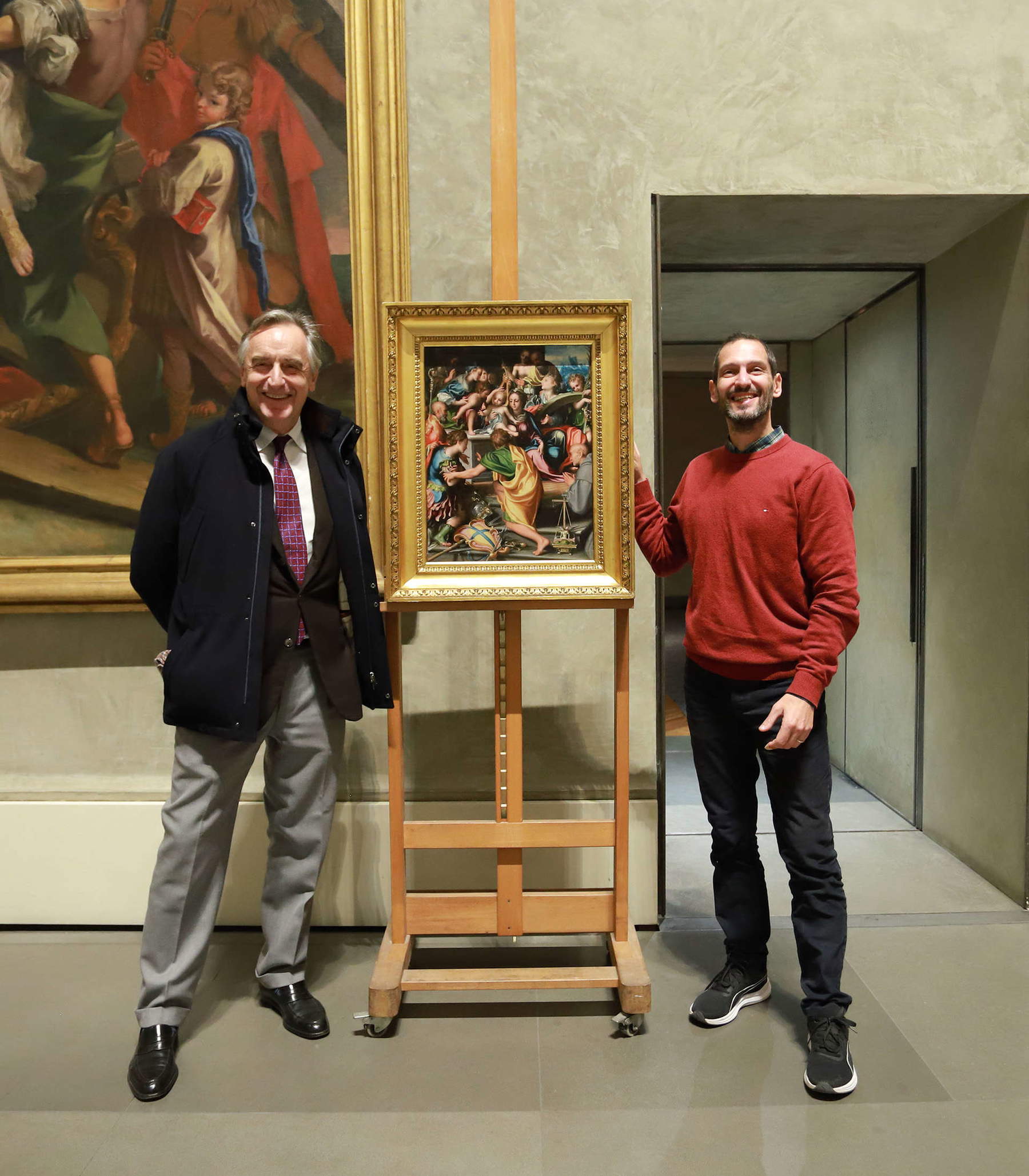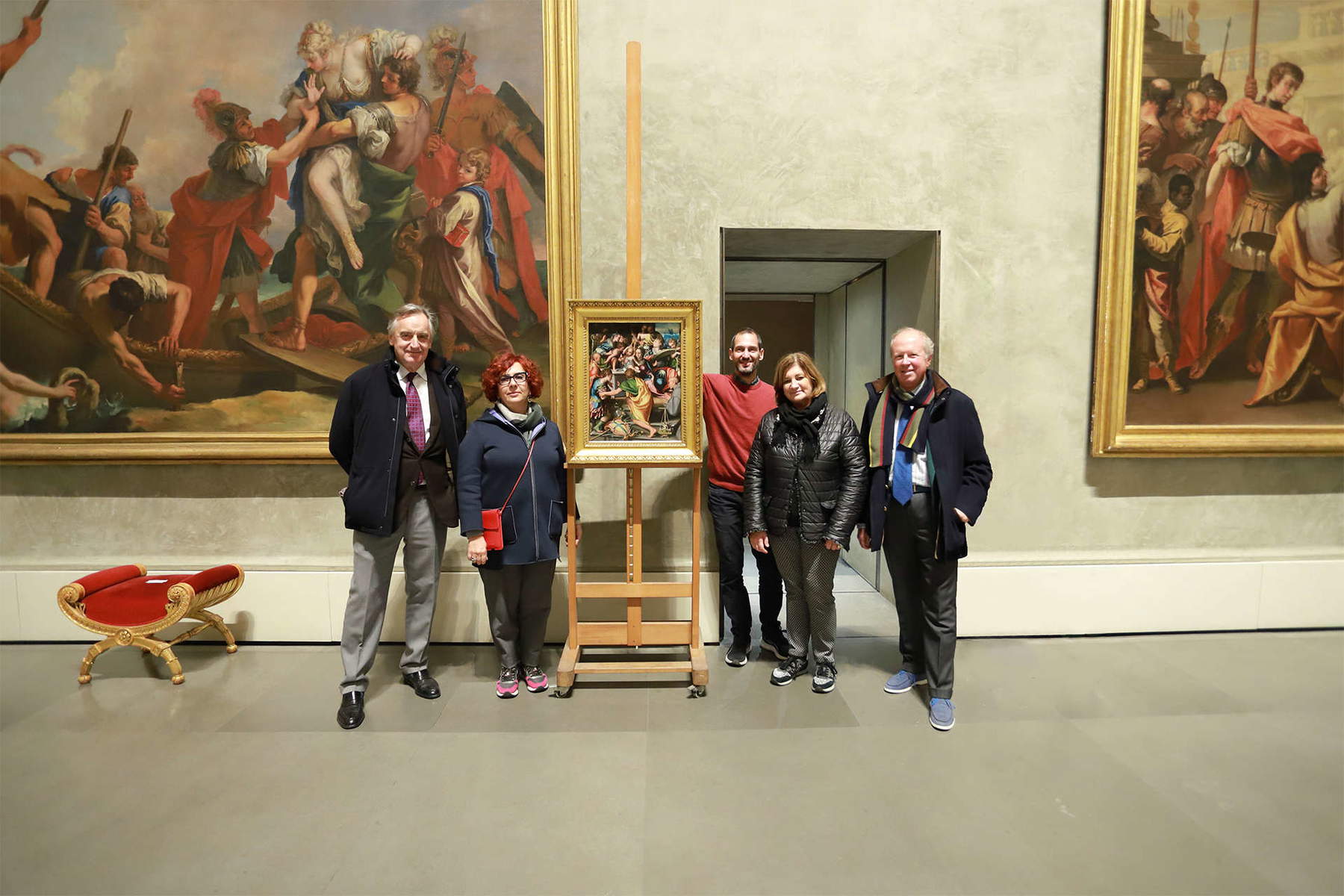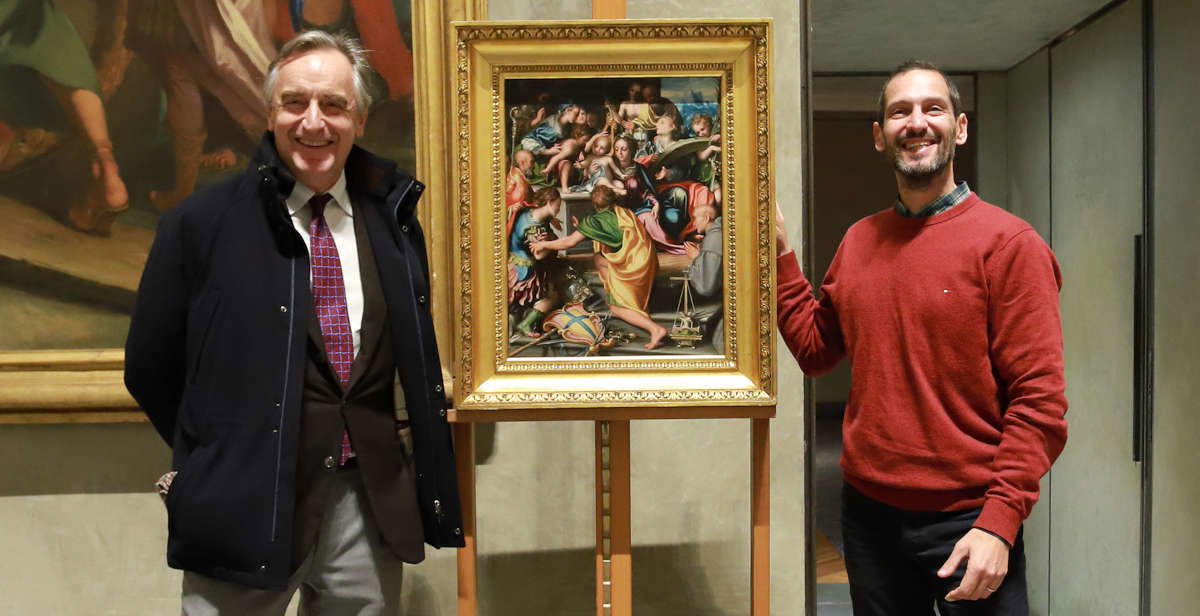Parma, major acquisition for the Pilotta: Giorgio Gandini del Grano's Allegory of Parma arrives
A new masterpiece of Parma Mannerism joins the collection of the National Gallery at the Complesso Monumentale della Pilotta in Parma. It is theAllegory of the City of Parma by Giorgio Gandini del Grano (Parma, c. 1500 - 1538), acquired thanks to funds from the General Directorate for Museums from the Carlo Orsi Gallery in Milan. The panel will be the protagonist of a dossier exhibition, scheduled from December 7, 2024 to January 29, 2025, in the gallery’s section dedicated to Mannerism. The mini-exhibition will offer an ideal dialogue between the recently acquired work, an early copy of it donated by Carlo Orsi himself, and three other works by Gandini already in the National Gallery’s collection.
Created between 1530 and 1535, theAllegory of the City of Parma is an emblematic example of Giorgio Gandini del Grano’s dynamic and complex style. The work consists of sixteen figures, each characterized by unique postures, movements, and gestures. This distinctive feature of Gandini’s production, which reflects a deliberately chaotic compositional organization, demonstrates the influence of Nordic culture and adherence to the stylistic features of Mannerism.

An important and meaningful work
An initial attribution of the work linked it to Correggio because of the obvious stylistic similarities and professional relationship between the two artists. However, the compositional peculiarities of the Allegory confirmed the authorship of Gandini, who is considered one of the leading exponents of the "School of Parma," alongside Francesco Maria Rondani and Michelangelo Anselmi. The work represents one of the high points of Gandini’s production.
The Allegory depicts the city of Parma as a kneeling female figure, flanked by a shield and weapons, as she is presented to the Virgin and Child by the city’s two patron saints: saint Hilary, holding a crosier, and saint Thomas, kneeling with his back to her.
The work includes a variety of characters that reinforce the link with Parma. At lower right is Blessed Bernardino da Feltre, recognizable by the Monte di Pietà coat of arms, while at upper left appear St. Roch, identifiable by the pilgrim’s shell, and St. Elizabeth with infant St. John the Baptist. St. Catherine of Alexandria, St. Sebastian holding arrows, and a female figure veiled in white, the symbol of the University of Parma, also emerge among the protagonists. This crowded and dynamic composition, while appearing haphazard, is the result of a refined search for asymmetrical balance.

A significant acquisition
The arrival of Allegory in the Pilotta’s collection represents a moment of great cultural significance. Not only because of the extreme rarity of Gandini’s works, whose catalog has just eight known paintings, but also because of the iconography that is strongly rooted in Parma’s history and identity.
The work adds to a collection that already houses other Gandini creations, reinforcing the Pilotta’s role as custodian of Parma’s Mannerist heritage and consolidating understanding of the relationship between the artist and his masters, including Correggio.
“The collections of the Complesso monumentale della Pilotta, distinguished by valuable archaeological and book holdings that combine the variety and richness of Parma’s artistic production, patronage and Farnese collecting, today welcome a new masterpiece,” said Massimo Osanna, director general of the Museums. "Giorgio Gandini del Grano’sAllegory of the City of Parma comes to the Museum thanks to an initiative strongly supported by the General Directorate for Museums, which wanted to reward a proposal formulated by the Pilotta that appeared to be philologically unexceptionable and of great luster for the National Museum System. Traced to a private collection, the work immediately appeared to be of great importance and created in a golden phase of Parma art, by Gandini, a petit-maître who certainly deserves renewed consideration in studies especially for the role he played in the area’s sixteenth-century artistic events."
“It is a great satisfaction,” comments Stefano L’Occaso, director of the Complesso monumentale della Pilotta, “to have secured for the Museum’s collections a painting of this importance for the city. My thanks go to the Carlo Orsi Gallery, to the efforts of the Scientific Committee and especially to the General Directorate of Museums for their fundamental support. It is an important acquisition for the Pilotta and for the whole city, symbolically gathered in a vast embrace within Gandini’s small but very precious panel.”

Who was Giorgio Gandini del Grano
Giorgio Gandini del Grano (Parma, circa 1500 - 1538) is an enigmatic figure in the artistic landscape of the Italian Renaissance. Although his pictorial catalog includes only eight works attributed with certainty, Gandini was a prolific draughtsman and collaborator with Correggio.
His paintings, characterized by compositional complexity and a strong Nordic influence, fit into the Mannerist climate that dominated Parma in the first half of the 16th century. When Correggio died in 1534, Gandini was chosen to decorate the apse and chancel of Parma Cathedral, but the undertaking was never completed due to his untimely death in 1538.
 |
| Parma, major acquisition for the Pilotta: Giorgio Gandini del Grano's Allegory of Parma arrives |
Warning: the translation into English of the original Italian article was created using automatic tools. We undertake to review all articles, but we do not guarantee the total absence of inaccuracies in the translation due to the program. You can find the original by clicking on the ITA button. If you find any mistake,please contact us.





























